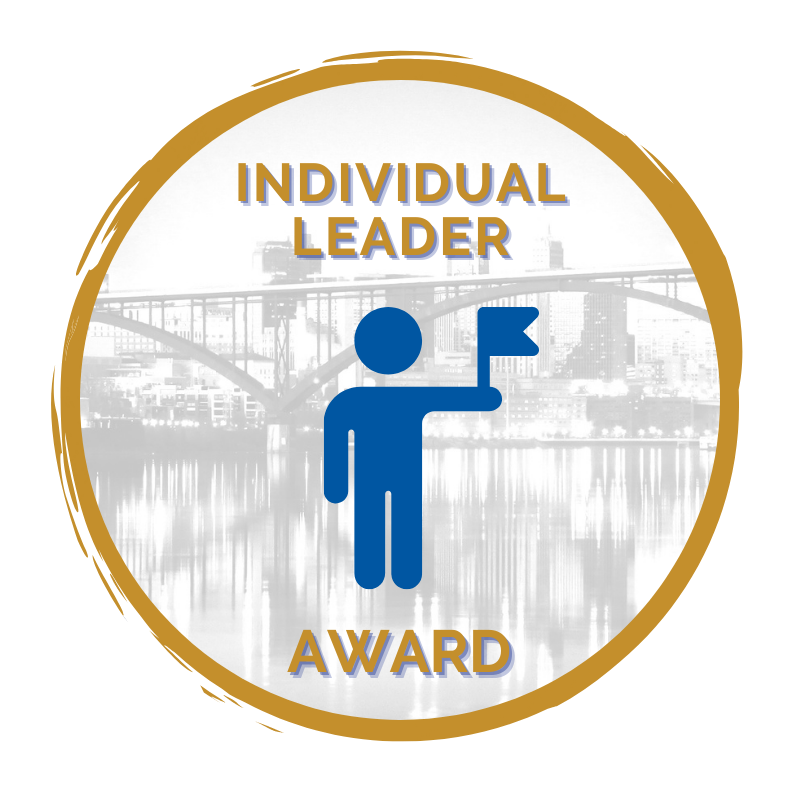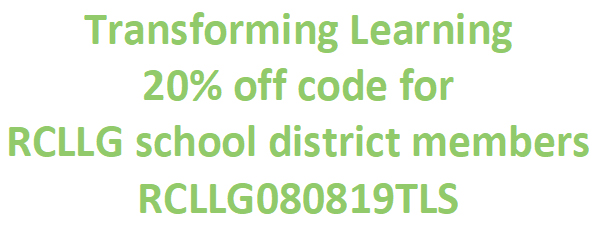
November 18-20, 2025
JW Marriott Mall of America, Bloomington, MN
GOLDEN GOVIT AWARDS
Learn more about the 2024 Golden GOVIT award WINNERS…
COLLABORATION AWARD

A joint effort between two or more government agencies, two or more departments within a single agency, or between government agencies and private firms/non-profit organizations that use shared resources to create a new product or program, resulting in improved service delivery to individuals, families and/or communities.
THE WINNER IS… HENNEPIN COUNTY SHERIFF’S OFFICE
WINNER:
Enabling Reliable and Continuous Public Access to Safety: Implementing a Computer Aided Dispatch System Upgrade
Hennepin County, MN
Read the Full Project Description
In collaboration with Hennepin County Information Technology (HCIT), Hennepin County Law, Safety & Justice IT (LSJ IT), the state of Minnesota, the Bureau of Criminal Apprehension (BCA), and several partner counties and cities, the Hennepin County Sheriff’s Office (HCSO) safely embarked on a critical upgrade to its Computer Aided Dispatch (CAD) system in February 2023. The CAD system is a cornerstone in enabling timely, dependable, and critical emergency communications and dispatching services to residents. The system ensures over 1.1 million residents in Hennepin County and surrounding areas can reach necessary emergency response assistance. The upgrade was a result of successful communication, complex cross-organizational project management, and diligent collaboration.
Hennepin County’s CAD system supports the handling of emergency calls in many jurisdictions, including all of Hennepin County, its partner cities, and surrounding county emergency dispatch centers. The system assists 911 call-takers and dispatch personnel in handling and prioritizing calls. Enhanced 911 sends the location of the call to the CAD system, which automatically displays the address of the caller. Information is then documented and processed to dispatch necessary emergency response services.
The previous dispatch system was nearing the end of its lifecycle, making a highly coordinated effort essential to ensure the continued delivery and reliability of public safety operations. This upgrade significantly impacts the safety of residents in Hennepin County, as reliable connectivity to a 911 phone call is vital. A key challenge in the upgrade process lay in the CAD system itself, with various integrations and interfaces mapped to the complex multi-solution architecture.
The transfer of systems impacted many different unidirectional or bidirectional IP communication links to other elements in the integrated ecosystem, including the Hennepin County GIS System, the Motorola Gateway, and LOGIS, a network connecting dispatch communications to squad cars. The project team meticulously planned and implemented the system upgrade to maintain public safety throughout the entirety of the transition.
HCSO and Law, Safety & Justice IT worked with several Hennepin County technical teams to balance effective functionality of the old CAD system while upgrading the new operating system to Windows 12. Throughout the year-long upgrade, resident connectivity to the CAD system never experienced a lapse in service. To ensure the project’s success, HCIT implemented a single ticket intake to implement a VLAN split, which created additional bandwidth for data centers, enhancing the system’s security and integrity. Additionally, the HCSO CAD Team worked closely with HCIT and LSJ IT teams to develop a VPN tunnel that improved connectivity, ensuring stable infrastructure.
The dispatch system upgrade also prioritized consistent and functional infrastructure. Public safety dispatchers now benefit from a modernized system that not only replicates the functionality of the old system, but also includes county policy-aligned vendor suggestions for necessary improvements to ensure critical emergency services and communications to residents.
HCSO’s CAD system upgrade underscores a strong commitment to resident safety and accessibility to public emergency response services. The upgrade enables a reliable system to continue to meet the health, and safety of Hennepin County residents, communities, and organization partners.
INNOVATION AWARD

A product, program or service that disrupts the current status quo and meets these three criteria:
Novelty: the degree of newness and uniqueness;
Impact: the magnitude and scope of improvement to government efficiency and effectiveness;
Replicability: the potential for replication in other government bodies or sectors.
THE WINNER IS… CITY OF EAGAN, MN
WINNER:
Solutions Development Initiative
City of Eagan, MN
Read the Full Project Description
The initiative’s impact is evident: improved efficiency and cost savings of $39,000 annually, equivalent to a third of a full-time position, and enhanced accessibility for the public engaging with City services. By combining existing technologies in new ways, the initiative offers unprecedented flexibility and adaptability, allowing Eagan to develop tailored solutions without being constrained by off-the-shelf software.
One standout solution is the Police Employee Management system, which replaced an outdated Access database accessible only from the office. Now, through SharePoint, Power Apps, and Power Automate, Police Administration can access real-time emergency contact information from any device, and employees can update their information online, reducing the reliance on paper forms and increasing operational efficiency.
Another example is the revamped Wellness Program for City employees. Previously bogged down by paper checklists, the program is now fully digital, utilizing Microsoft Forms, SharePoint Lists, Power Automate, and Power Apps to provide participants with a streamlined, user-friendly dashboard that tracks their progress in real-time.
Eagan’s Solutions Development initiative’s impact extends beyond internal operations, also enhancing community engagement. The Parks Events Vendor Registration system, for instance, transformed the cumbersome vendor application process for events like the Food Truck Festival. This new digital registration solution allows vendors to apply and receive updates directly on their phones, while staff can easily manage applications and communicate with vendors, saving time and improving the overall experience.
Eagan’s Solutions Development initiative demonstrates excellence in government technology through its commitment to innovation, impact, and replicability. The program brings new, unique solutions to local government using flexible platforms at low cost. Its measurable impact on efficiency and accessibility showcases the broad scope of improvement, from cost savings to improved service delivery. Eagan’s approach using ubiquitous tools offers a model that other government agencies can adopt, demonstrating that with the right combination of technology and vision, municipal challenges can be met with innovative solutions.
SERVICE AWARD

The delivery of digital information and transactional services that makes a difference in the lives of citizens. Nominations should meet these criteria: a strong focus on the end-user’s accessibility and experience, a high level of citizen engagement, incorporation of the technologies used by today’s citizens, and timely, informative content.
WINNER:
Hennepin County Design System
Hennepin County, MN
The Hennepin County Design System represents a transformative effort to create a unified, accessible digital experience for both county employees and the public.
Read the Full Project Description
This collaborative structure is what makes the design system so impactful. Unlike many design initiatives that focus solely on technical expertise, the Hennepin County Design System draws input from a broad array of stakeholders. Content creators from business areas contribute valuable insights into how digital services can better serve the public, while managers and directors provide strategic oversight. The sponsorship from top leadership, including the Chief Digital Officer, reflects the county’s commitment to making user experience a priority across all levels of government. The UX CoP, ensures the system remains adaptable to the evolving needs of the county and its residents.
One of the key innovations of the design system is its focus on accessibility. Every component within the system is built with accessibility in mind, adhering to WCAG (Web Content Accessibility Guidelines) standards to ensure that all residents, including those with disabilities, can easily access and navigate county services. This commitment to inclusivity aligns with the county’s broader mission to serve all its diverse communities, making government services more equitable and user-friendly.
The governance of the design system is another area where the project excels. The UX CoP, which is run by the DX department, meets regularly to review, and update the system’s components, ensuring they remain aligned with best practices and emerging trends in design and technology. The CoP’s collaborative nature fosters innovation and ensures that the system benefits from a wide range of perspectives. By bringing together professionals from various departments—designers, developers, content creators, and managers—the design system can address real-world challenges in a holistic way, creating solutions that work for everyone.
The design system has already made a significant impact on the efficiency and effectiveness of Hennepin County’s digital services. By standardizing design practices, it reduces duplication of effort, accelerates project timelines, and creates a more consistent user experience allowing teams to focus on innovation rather than reinventing the wheel for each new initiative. Additionally, the system’s flexibility and makes it easily replicable, providing a model that other government agencies can adopt to improve their own digital services.
By integrating accessibility, fostering cross-functional collaboration, and streamlining service delivery, the system sets a new standard for how government can leverage design to improve the user experience. Its replicability and adaptability make it a model for government agencies nationwide.
https://www.hennepin.us/design-system
INDIVIDUAL LEADER AWARD

An individual who champions and implements innovation, inspires collaboration, is focused on improving service, and demonstrates a personal commitment to advancing the professional and career development of him/herself as well as others in their agency.
WINNER:
Cory Stubbendick
Chief Business Technology Officer, Minnesota IT Services partnering with the Department of Revenue.
Cory Stubbendick, Chief Business Technology Officer (CBTO) for the Minnesota Department of Revenue, has demonstrated exemplary leadership and innovation in public sector IT over the last decade.
Read the Full Project Description
Cory Stubbendick, Chief Business Technology Officer (CBTO) for the Minnesota Department of Revenue, has demonstrated exemplary leadership and innovation in public sector IT over the last decade. His strategic vision, commitment to digital transformation, and collaborative approach have significantly improved the department’s operational efficiency, cybersecurity posture, and service delivery to Minnesota’s citizens. Cory’s achievements make him an outstanding candidate for the IT Leader of the Year Award at the GOVIT Symposium.
Leadership in Digital Transformation
Under Cory’s leadership, the Minnesota Department of Revenue has undergone a comprehensive digital transformation aimed at modernizing its technology infrastructure and enhancing service delivery. Recognizing the growing demands on government services, Cory spearheaded the adoption of cloud-based solutions that have improved scalability, security, and cost-effectiveness. One of the most significant projects was the migration of the department’s legacy tax processing systems to a modern, cloud-native platform. This transition has resulted in faster processing times, reduced system downtime, and enhanced user experience for both internal staff and taxpayers. The new system’s scalability has allowed the department to handle increased tax filings during peak periods without system overloads or delays. Another key initiative from Cory is the Project to Product transformation initiative where IT services are delivered using Agile and Product principles. Built on customer centricity and human centered design, Cory’s vision is to create services which delight citizens of Minnesota. His forward-thinking approach in leveraging product solutions has also reduced the department’s reliance on outdated infrastructure, leading to long-term cost savings and greater operational agility.
Cybersecurity Advancements
In the face of escalating cybersecurity threats, particularly within government agencies managing sensitive financial data, Cory has been instrumental in strengthening the Department of Revenue’s cybersecurity defenses. He implemented a multi-layered cybersecurity strategy that includes advanced threat detection, continuous monitoring, and comprehensive staff training on cybersecurity best practices. Under Cory’s leadership, the department plans to adopt a Zero Trust security framework, ensuring that every transaction, user, and device is verified before gaining access to the system. This approach has significantly minimized the risk of data breaches and ensured the secure handling of sensitive taxpayer information.
Improving Service Delivery through Automation
Cory has been a driving force behind the automation of key processes within the Department of Revenue. One of the most impactful projects under his leadership was the implementation of process automation in tax return processing. By automating repetitive tasks such as data entry and document validation, the department has reduced manual workloads, minimized errors, and significantly decreased processing times for tax returns. This has allowed the department to redirect valuable staff resources toward more complex, value-added activities. The implementation of automation also improved the department’s ability to respond to taxpayer inquiries quickly. With automated workflows in place, the department can now process refunds and resolve disputes in a fraction of the time it took in previous years, improving taxpayer satisfaction and reinforcing public trust in government services.
Fostering a Collaborative IT Culture
Cory’s success as a technology leader extends beyond the implementation of new systems and solutions. He has fostered a culture of collaboration and continuous improvement within the department’s IT team.













